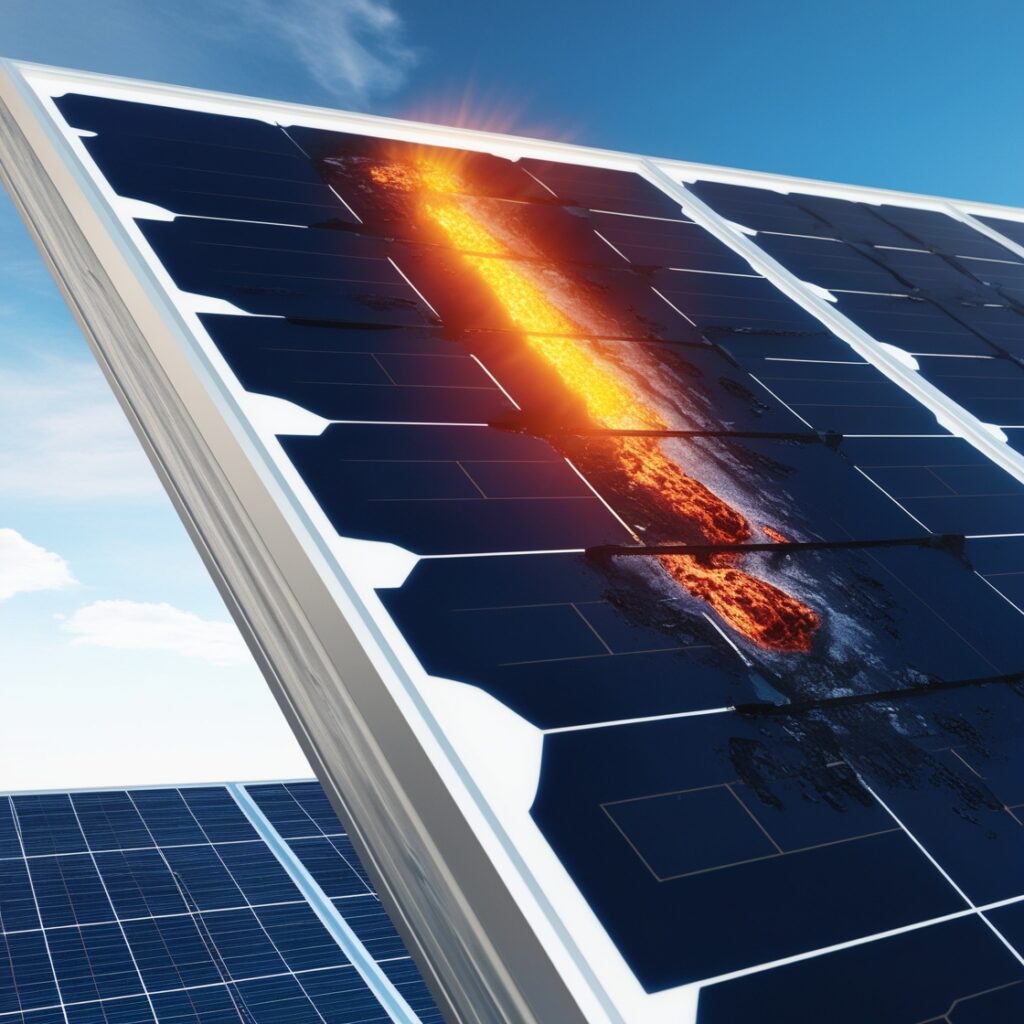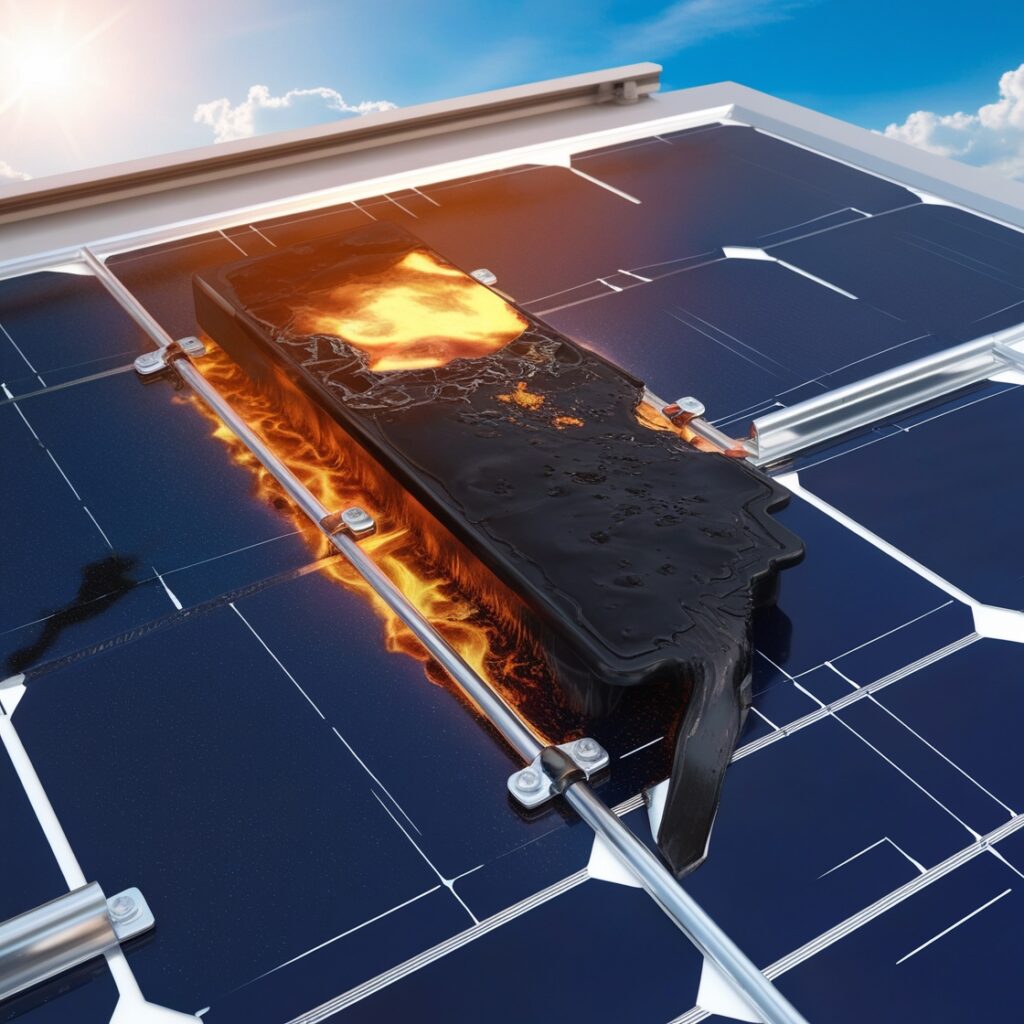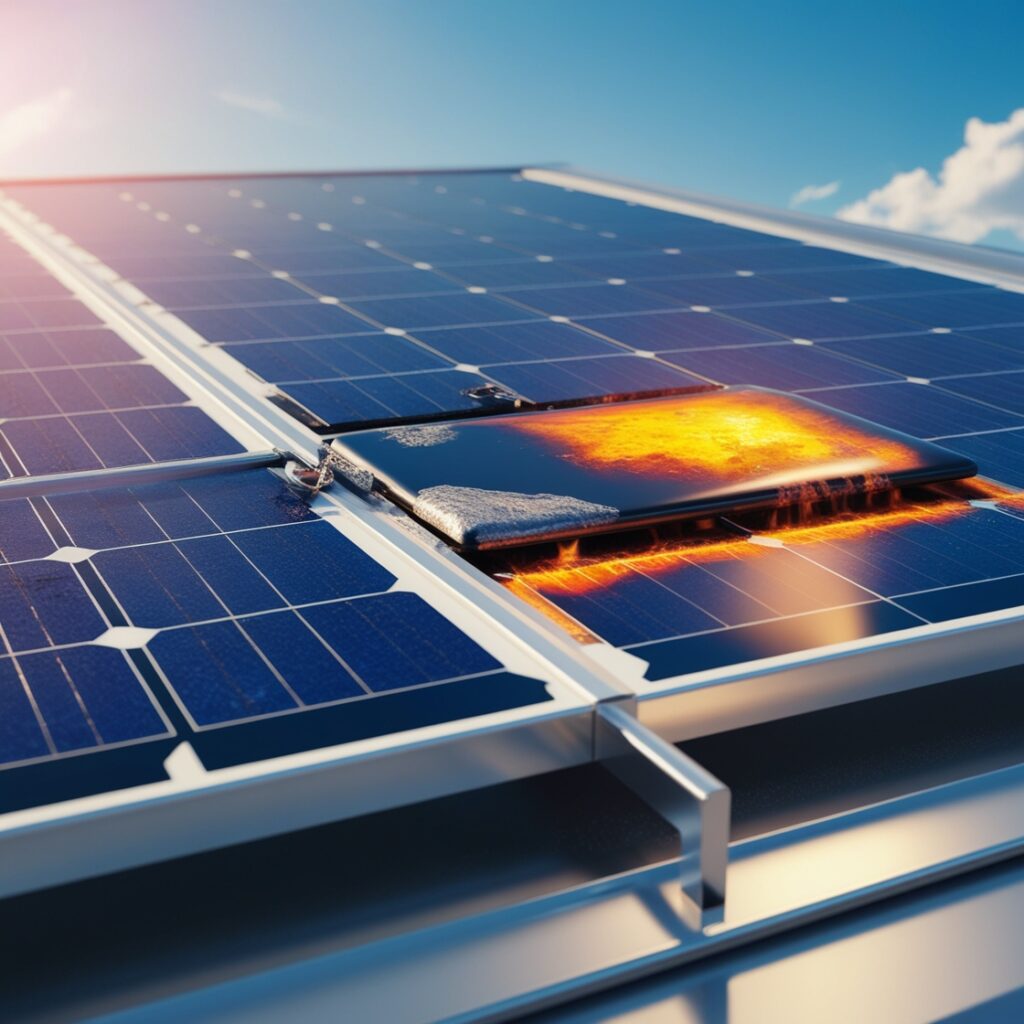Introduction
are renowned for their efficiency and eco-friendliness. However, one of the critical challenges faced by solar panel users is the development of hot spots. These localized areas of overheating can significantly reduce a panel’s performance and lifespan, making them a top concern for homeowners relying on solar power. This article will delve into the causes of solar panel hot spots, their implications, and practical solutions to address them effectively.

What Are Hot Spots on Solar Panels?
A hot spot refers to a specific area on a solar panel where the temperature is significantly higher than the surrounding sections. This phenomenon occurs when one or more cells in the panel are obstructed or malfunctioning, leading to uneven energy distribution. Over time, these overheated areas can cause permanent damage to the panel.
Common Causes of Hot Spots
- Shading Issues
Partial shading from trees, buildings, or debris can block sunlight from reaching specific cells. These shaded cells turn into resistors, dissipating energy as heat instead of generating electricity. - Faulty Soldering or Connections
Poor electrical connections within the panel can lead to uneven current flow, which contributes to localized heating. - Cell Mismatch
Solar panels consist of multiple cells connected in series. If one cell has a manufacturing defect or performance discrepancy, it can cause hot spots due to uneven energy production. - Physical Damage
Cracks or damage from hail, strong winds, or improper handling can lead to internal electrical faults, increasing the likelihood of hot spots. - Dirt and Debris Accumulation
Dust, bird droppings, or fallen leaves can block sunlight, causing uneven heating across the panel’s surface.

Impacts of Hot Spots on Solar Panels
- Reduced Efficiency
Hot spots decrease the overall energy output of the solar panel, diminishing its ability to generate electricity effectively. - Shortened Lifespan
Prolonged overheating can degrade the materials within the panel, leading to a shorter operational life. - Increased Maintenance Costs
Addressing damage caused by hot spots often requires repairs or even replacement of the panel, adding to maintenance expenses. - Fire Hazards
In extreme cases, hot spots can lead to overheating that poses a fire risk.
How to Detect Hot Spots
- Thermal Imaging Cameras
These cameras can quickly identify areas of excessive heat on a solar panel, providing a visual representation of hot spots. - Performance Monitoring Systems
Advanced systems can detect irregularities in energy production, alerting users to potential hot spots. - Regular Visual Inspections
Checking for physical damage, dirt accumulation, or discoloration can help identify problematic areas.

Preventing Hot Spots
- Optimal Installation
Ensure your solar panels are installed in areas free from shading and with proper angling to maximize sunlight exposure. - Routine Cleaning
Regularly clean your panels to remove dust, debris, and bird droppings that may obstruct sunlight. - Using Bypass Diodes
Modern solar panels often include bypass diodes, which allow electricity to flow around obstructed or malfunctioning cells, reducing the risk of hot spots. - Quality Assurance
Invest in high-quality solar panels from reputable manufacturers to minimize the chances of cell mismatch or defects. - Periodic Maintenance
Schedule routine maintenance with certified technicians to inspect electrical connections and detect potential issues early.
Fixing Hot Spots
- Reposition Shaded Panels
Trim nearby trees or relocate objects causing shading to ensure unobstructed sunlight exposure. - Repair or Replace Damaged Cells
Consult a professional to repair soldering issues or replace defective cells causing the hot spots. - Upgrade Monitoring Systems
Install advanced monitoring systems to track panel performance and identify irregularities before they escalate. - Consider Protective Coatings
Some panels can be treated with coatings that enhance durability and reduce the impact of physical damage or debris accumulation.
Case Study: Successful Hot Spot Prevention
A homeowner in California reported a 20% drop in energy output due to shading from a newly planted tree. After trimming the tree and installing a performance monitoring system, the homeowner restored the panel’s efficiency and avoided further hot spot issues. This highlights the importance of proactive maintenance and monitoring.
Conclusion
Hot spots are a significant concern for solar panel users, but they are not insurmountable. By understanding their causes, effects, and solutions, you can ensure the longevity and efficiency of your solar power system. Regular maintenance, quality installations, and advanced monitoring can go a long way in preventing and addressing this issue.










1 thought on “Understanding and Fixing Solar Panel Hot Spots: Causes and Solutions”
Comments are closed.